Spatial transformations: maketform, tformfwd, and tforminv
Several Image Processing Toolbox functions related to spatial transformations use "tform" structures. A tform structure has data and function handles needed for applying a spatial transformation in the forward or the inverse direction, and sometimes in both directions.
Contents
maketform
Function maketform has several syntaxes for constructing different types of tform structures. For example, you can construct an affine transform by providing an A matrix:
A = [2 0 0; 0 2 0; 0 0 1]; % Stretch by a factor of 2 in both directions. tform = maketform('affine', A);
tformfwd
Toolbox function tformfwd transforms points from input space to output space. For example, to apply the affine transform above to the point (u,v) = (2,3), do this:
uv = [2 3]; xy = tformfwd(tform, uv)
xy =
4 6
tforminv
Function tforminv transforms points from output space to input space. If we apply the inverse transformation to the point xy computed above, we should get back the original point.
uvp = tforminv(tform, xy)
uvp =
2 3
Introducing George
The spatial transformation functions imtransform, tformarray, tformfwd, tforminv, etc., were introduced to Image Processing Toolbox version 3 in 2001. While designing these functions, we almost always had input-space output-space diagrams on our whiteboards so we could keep our notation straight.
Because I have no drawing skills, I always drew a crude head-and-shoulders outline on these diagrams as the "image" being transformed. I started calling this figure "George." Here's what he looks like:
% https://blogs.mathworks.com/images/steve/37/george.mat load george plot(x,y), axis ij, axis equal, axis([-1 1 -1 1]), grid on
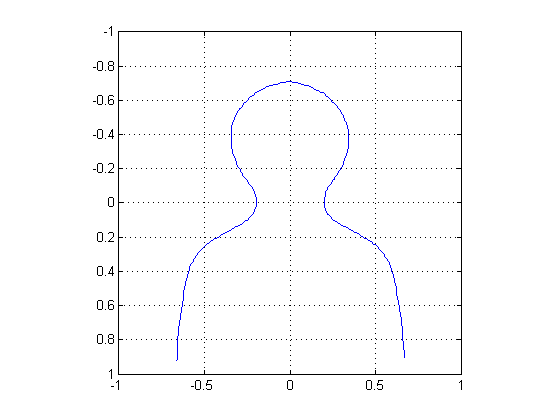
Why "George"? Well, any graduate of the Georgia Institute of Technology will recognize George's full name: George P. Burdell. If you don't know George and are curious, I'm sure Google will turn something up for you.
I like to use George to illustrate different affine transforms.
Scaling example
A1 = [2 0 0; 0 2 0; 0 0 1]; tform1 = maketform('affine', A1); uv1 = tformfwd(tform1, [x y]); subplot(1,2,1) plot(x,y), axis ij, axis equal, axis([-2 2 -2 2]), grid on, title('George') subplot(1,2,2) plot(uv1(:,1), uv1(:,2)), axis ij, axis equal, axis([-2 2 -2 2]) grid on title('Scaled by 2')
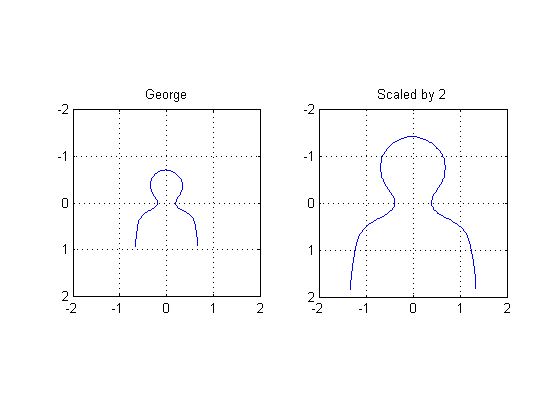
Rotation example
theta = pi/4; A2 = [cos(theta) sin(theta) 0; -sin(theta) cos(theta) 0; 0 0 1]; tform2 = maketform('affine', A2); uv2 = tformfwd(tform2, [x y]); subplot(1,2,1) plot(x,y), axis ij, axis equal, axis([-2 2 -2 2]), grid on, title('George') subplot(1,2,2) plot(uv2(:,1), uv2(:,2)), axis ij, axis equal, axis([-2 2 -2 2]) grid on title('Rotated by 45\circ')
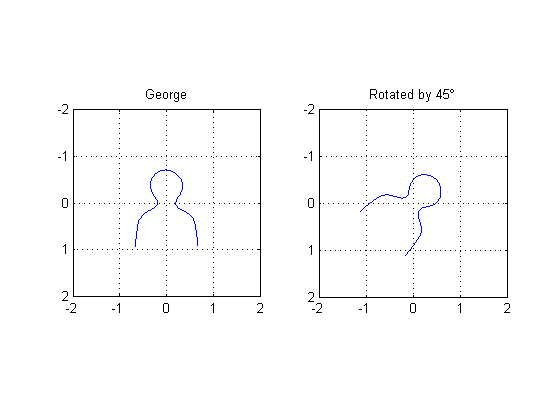
Translation example
A3 = [1 0 0; 0 1 0; 1 -1 1]; tform3 = maketform('affine', A3); uv3 = tformfwd(tform3, [x y]); subplot(1,2,1) plot(x,y), axis ij, axis equal, axis([-2 2 -2 2]), grid on, title('George') subplot(1,2,2) plot(uv3(:,1), uv3(:,2)), axis ij, axis equal, axis([-2 2 -2 2]) grid on title('Translated')

- カテゴリ:
- Spatial transforms



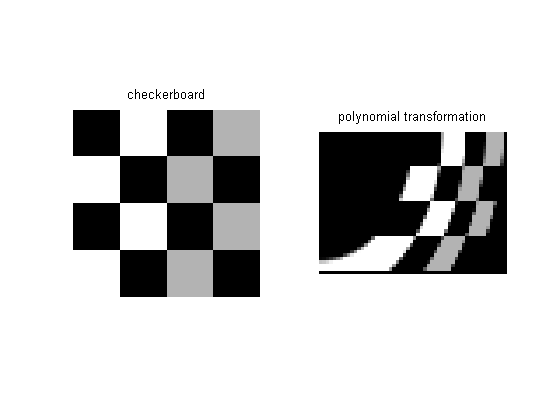
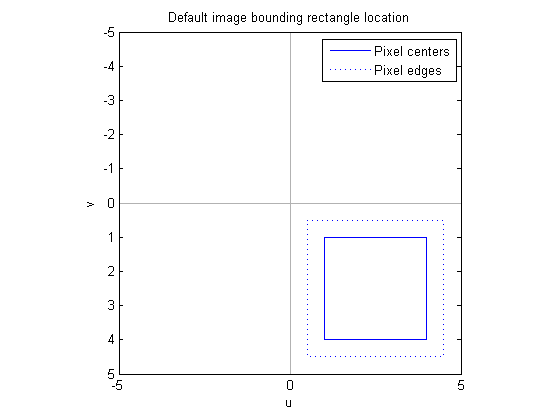
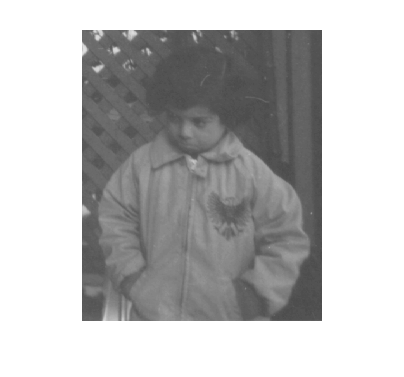


コメント
コメントを残すには、ここ をクリックして MathWorks アカウントにサインインするか新しい MathWorks アカウントを作成します。